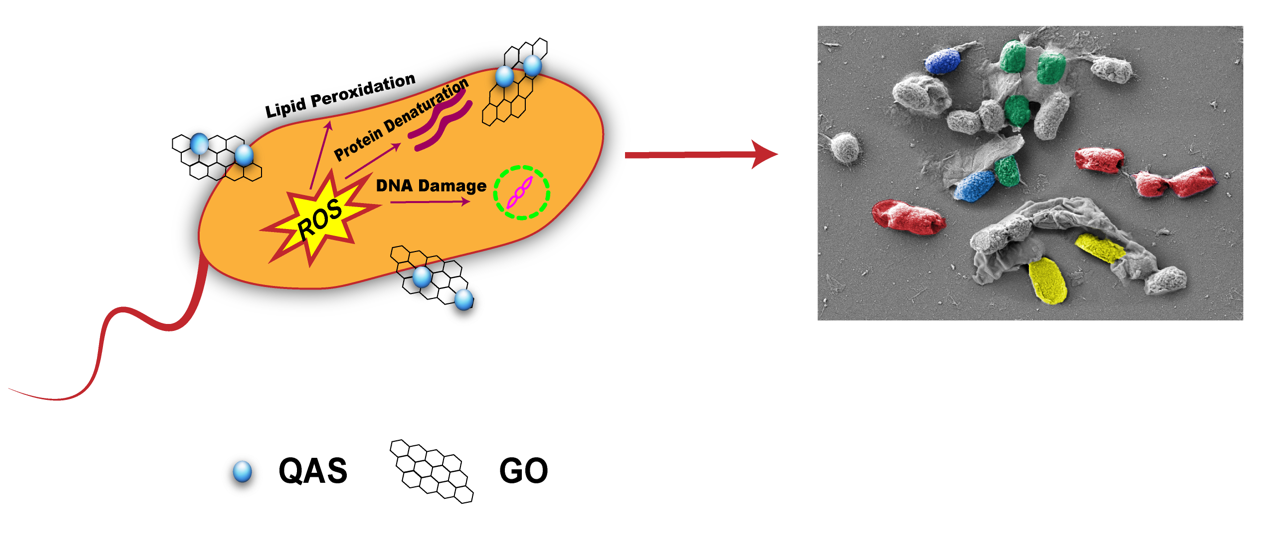
Graphene has drawn considerable attention for its extraordinary mechanical strength, optical transmittance, electrical conductivity and high specific area properties. It is the world’s strongest known material.
Due to its excellent optical transmittance, graphene is the ideal liquid crystal display material for computer, TV and cell phone display screens. It is also known as the material with the best electrical conductivity, which can replace silicon to produce supercomputers that run faster and have lower energy consumption. Additionally, in the biomedical fields, graphene and its deviates exhibit excellent antibacterial activity against a wide range of bacteria.
[Graphene’s] antibacterial properties have been attributed to the combined mechanisms of bacterial membrane perturbation caused by sharp edges and oxidative stress induction.
As we know, the prevalence of antimicrobial resistant bacteria, caused by the indiscriminate application and overuse of antibiotics, has been a global issue threatening human health for several decades. Antimicrobial resistance is projected to cause the death of approximately 300 million people in the next 35 years. Thus, it is imperative to find alternative ways to fight bacteria.
Recent advances in nanomaterials have allowed for a considerable number of applications of graphene in antibacterial sciences. Its antibacterial properties have been attributed to the combined mechanisms of bacterial membrane perturbation caused by sharp edges and oxidative stress induction. Graphene-based composite antibacterial materials have therefore become a hot topic in scientific research.
Our study focuses on the application of graphene oxide-quaternary ammonium nanocomposite (GO-QAS) for wound repair and infection control. The GO-QAS nanocomposite exhibits excellent biocompatibility and synergistic antibacterial ability against multidrug resistant bacteria through not only mechanical membrane perturbation (including wrapping, bacterial membrane insertion, and bacterial membrane perforation), but also oxidative stress induction.
Notably, GO-QAS topically applied on infected wounds maintained highly efficient antibacterial activity and accelerated the healing process of infected wounds by promoting re-epithelialization and granulation tissue formation. In the future, GO-QAS nanocomposite could be applied as a promising antimicrobial agent for infected wound management and antibacterial wound dressing synthesis.
Comments